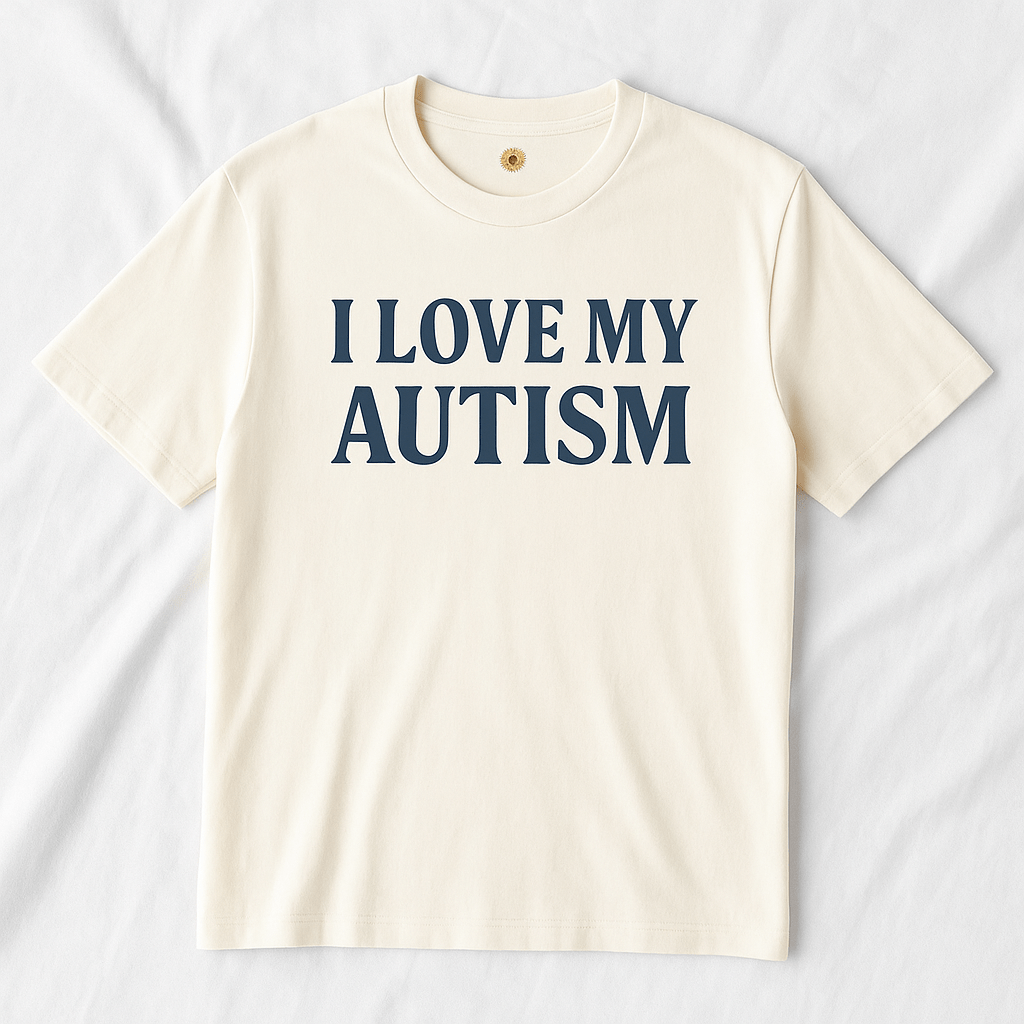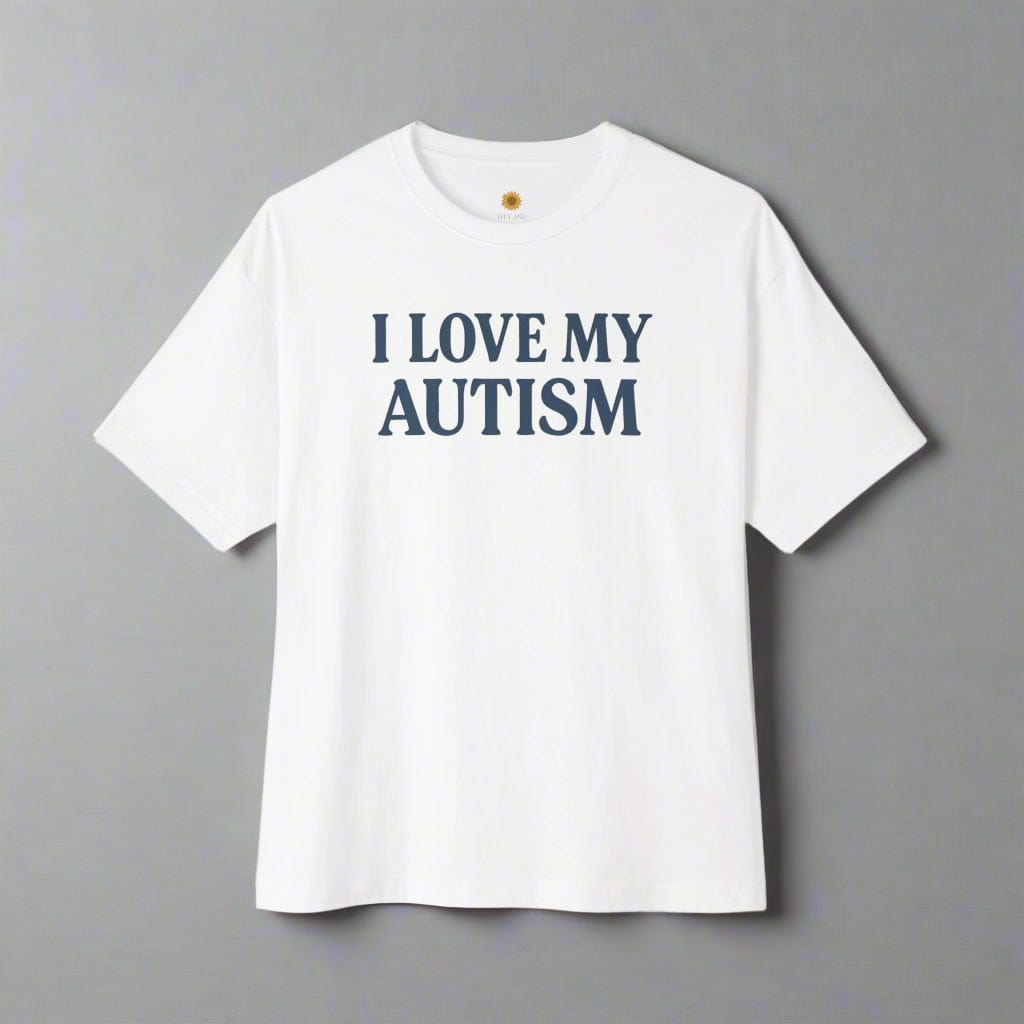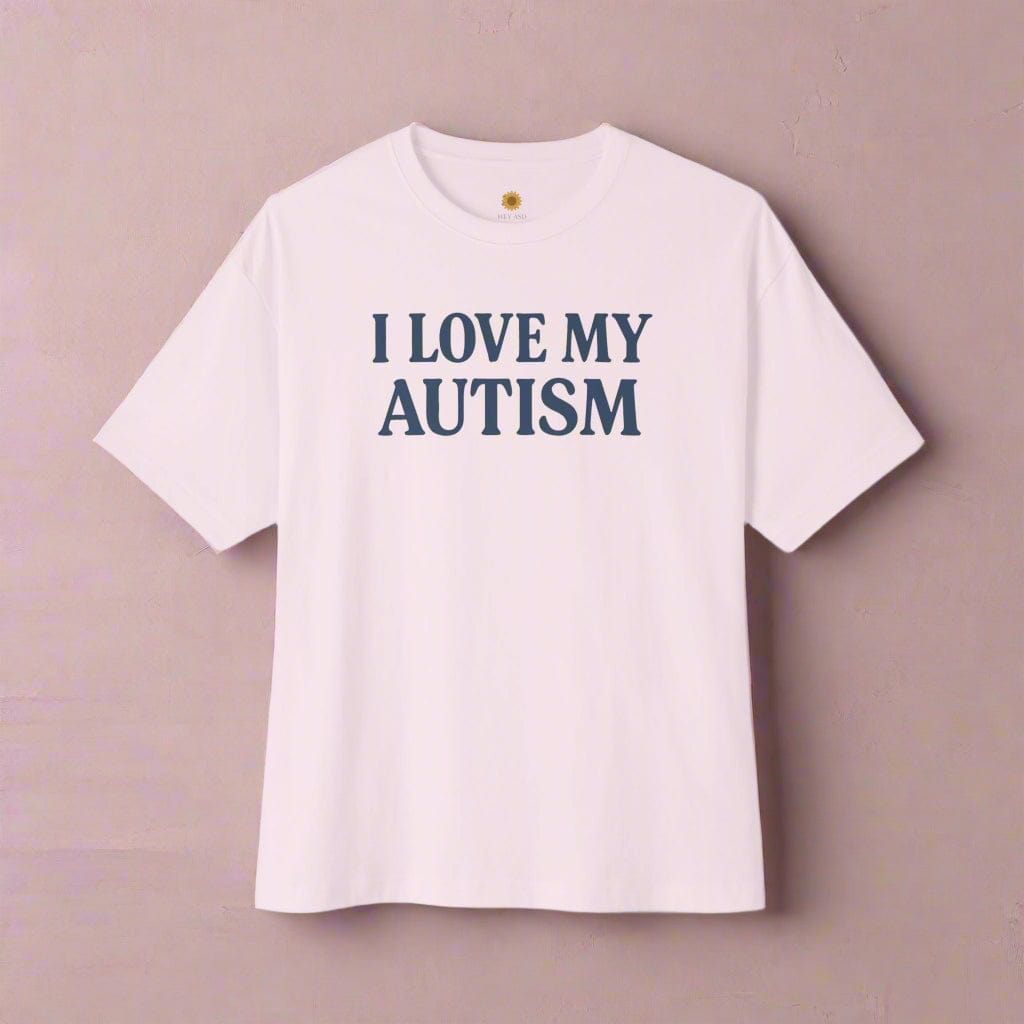Understanding PDA Autism in Adults: A Compassionate Guide

Written by the HeyASD Editorial Team
Have you ever felt a sudden resistance to a simple request — even something you genuinely wanted to do? For many autistic adults, that feeling isn’t defiance or laziness. It’s an anxiety-based response known as Pathological Demand Avoidance (PDA), a profile of autism centered around autonomy and control.
While not yet an official diagnosis in the DSM-5, PDA is widely recognized within the autistic community and by some clinicians as a distinct experience. For adults who have spent years feeling misunderstood or mislabeled, learning about PDA can be profoundly validating. This guide isn’t about diagnosing — it’s about understanding yourself, your needs, and the relief that comes from realizing: you were never “difficult,” just overwhelmed.
The Demand Avoidance Profile — Why It Matters for Autistic Adults
Understanding the demand avoidance profile is crucial for autistic adults who have spent years feeling misunderstood. Being labeled as difficult, lazy, or oppositional can be damaging. Recognizing that extreme demand avoidance is a neurological response rooted in anxiety can be a powerful act of self-discovery.
This understanding opens the door to self-compassion and more effective support strategies. We will explore the common misconceptions, how PDA evolves from childhood into adulthood, and its recognition within different communities.
Unpacking Misconceptions Around PDA Autism in Adults
One of the biggest hurdles for adults with PDA traits is overcoming common misunderstandings. Pathological Demand Avoidance is frequently confused with Oppositional Defiant Disorder (ODD), but they are very different. ODD is often seen as a behavioral issue centered on defiance, while PDA is an anxiety-based response. The avoidance isn't a choice to be difficult; it's a can't, not a won't.
This reaction stems from a nervous system that perceives demands as threats to autonomy, triggering intense anxiety. The outward behaviors—like making excuses or withdrawing—are attempts to regain a sense of safety and control. This constant state of high alert can create significant challenges in daily life, impacting work, relationships, and mental health.
For many, this experience is exhausting and isolating. Shifting the perspective from defiance to self-protection is the first step toward better support. It allows you and others to see the behavior as a communication of overwhelm, not an act of opposition.
From Childhood to Adulthood: PDA's Evolution in Autistic Experiences
The way demand avoidance shows up can change significantly over a lifetime. While autistic children might exhibit more externalized behaviors like direct refusal or creating diversions, adults often internalize their responses. Years of masking and trying to fit in can teach you to hide your anxiety and avoidance in more subtle ways.
As an adult, this profile of autism might look like chronic procrastination, indecisiveness, or using charm and people-pleasing to navigate expectations. The persistent drive for autonomy remains, but the strategies to protect it become more sophisticated. You might agree to things verbally while feeling an internal sense of panic or a "freeze" response that prevents you from following through.
This internal conflict is exhausting and is a common pathway to autistic burnout. Understanding that your experience has simply evolved, not disappeared, is validating. It helps explain why you might feel capable one moment and completely paralyzed the next.
PDA Recognition in Clinical and Community Spaces
The formal recognition of PDA is still a topic of debate. Currently, Pathological Demand Avoidance is not listed as a standalone diagnosis in major diagnostic manuals like the DSM-5 or ICD-11. This means you cannot get an official, separate diagnosis of PDA. However, this doesn't invalidate the experience.
Within the autism community and among some healthcare professionals, PDA is acknowledged as a distinct profile of autism. Organizations like the PDA Society in the UK define it as "a profile on the autism spectrum." Some clinicians may note a "demand avoidant profile" in an autism spectrum disorder assessment to guide support.
Many autistic people self-identify with the PDA label because it accurately describes their experiences and helps them find community and strategies that work. The conversation is ongoing, but for many, having a term for their experience is the first step toward getting appropriate support.
What Is PDA Autism in Adults?
So, what is PDA autism in adults? At its core, Pathological Demand Avoidance syndrome, or PDA, is a profile on the autism spectrum. Its main feature is an anxiety-driven need to avoid the demands of daily life. This isn't about laziness or defiance; it's about a profound need to maintain autonomy and control.
For an autistic person with this profile, even simple requests can trigger extreme anxiety, leading to a fight, flight, or freeze response. Understanding this helps reframe the experience from a behavioral problem to a survival instinct. This section will explore the key components of this subtype of autism.
Understanding Pathological Demand Avoidance as an Autism Profile
Pathological Demand Avoidance is best understood as an autism profile, which is a specific collection of traits and behaviors. When the term was first introduced by Elizabeth Newson in the 1980s, it was described as a "pervasive developmental disorder" separate from classic autism because it included traits like surface sociability that were not commonly associated with autism at the time.
Today, our understanding of the autism spectrum is much broader. We now recognize that many autistic people can be socially skilled, creative, and use complex social strategies. Therefore, PDA is seen as a set of characteristics that some autistic individuals share.
The defining feature remains an intense resistance to demands, driven by extreme anxiety and a need to be in control. It's not a separate diagnosis but a way of describing a specific experience within the broader neurotype of autism. This helps in tailoring support that respects the individual's need for autonomy.
The Anxiety-Autonomy Connection in Adult PDA Autism
The link between anxiety and autonomy is central to understanding the PDA profile. For an adult with PDA autism, any perceived loss of autonomy can feel like a direct threat. This isn't a conscious thought but an automatic nervous system reaction. When a demand is placed on you—whether by someone else, an expectation, or even yourself—your brain can interpret it as a loss of control.
This perception triggers a fight, flight, or freeze response, flooding your system with anxiety. Your anxiety levels skyrocket, and the primary goal becomes escaping the demand to restore your sense of safety and autonomy. This is why even things you want to do can become impossible; the simple fact that it has become an expectation or "demand" makes it threatening.
This is not a behavioral choice but a deeply ingrained survival mechanism. Your demand avoidance is your brain’s way of protecting you from what it perceives as a dangerous loss of control.
Rethinking "Pathological"—Why Compassionate Language Matters
Words have power, and the term "Pathological Demand Avoidance" can feel heavy and judgmental. The word "pathological" comes from a medical model that views differences as deficits. For many, this language implies that there is something inherently wrong with them, which can be damaging to mental health.
In the spirit of neurodiversity and using compassionate language, many people are rethinking this term. Some prefer alternatives like "Persistent Drive for Autonomy," a term suggested by Tomlin Wilding, because it frames the experience around a core need rather than a flaw. Others use Extreme Demand Avoidance (EDA). This shift toward identity-first language helps center the person's experience with respect.
While some feel the word "pathological" accurately describes how all-consuming the experience can be, the move toward more empowering language is important. It helps you and others see your traits not as a disorder to be fixed, but as a part of who you are that requires understanding and support.
Key Signs of PDA Autism Symptoms in Adults
Recognizing the signs of PDA in yourself or a loved one can bring immense clarity. For autistic adults, these symptoms are often more internalized and subtle than in children. The pervasive drive for control and extreme demand avoidance manifest in complex ways, often leading to burnout and emotional distress.
Common signs include a powerful resistance to everyday demands, using sophisticated avoidance strategies, and experiencing intense mood swings. Let's look closer at these key symptoms and what they might look like in your daily life.
Difficulty Accepting Demands—Internal and External
A core feature of the PDA profile is an intense and often immediate resistance to demands. It's important to understand that a "demand" can be almost anything. It's not just about being told what to do. The avoidance of everyday demands can be triggered by various things.
These triggers can be categorized into a few types:
-
Direct demands: These are clear instructions, like "Can you finish this report?" or simple requests like "Brush your teeth."
-
Internal demands: These come from within yourself, such as wanting to take a shower, feeling hungry, or knowing you need to go to sleep.
-
Implied demands: These are unspoken expectations, like a deadline approaching, a question that needs an answer, or food placed in front of you.
For someone with PDA traits, any of these can cause extreme anxiety. The logical part of your brain may know the task is small or even desirable, but the automatic, anxiety-driven response is to resist.
Burnout Cycles and Emotional Withdrawal in Adult PDA Autism
Living with a nervous system that is constantly on high alert is exhausting. The daily effort of negotiating demands, masking anxiety, and trying to function in a world not built for you often leads to recurring burnout cycles. You might have periods where you feel relatively capable, followed by crashes where you can barely manage basic tasks.
When the pressure from demands becomes too much, your system gets overloaded. This can result in emotional outbursts that may look like anger or irritability but are actually expressions of panic and overwhelm. Following these outbursts or periods of high stress, you might withdraw completely. This isn't a choice to be antisocial; it's a necessary recovery period. Your brain and body need to retreat from all demands to regulate and recharge.
Understanding these cycles as a core part of this profile of autism can help you be kinder to yourself. It's not a personal failing but a natural consequence of the immense energy it takes to navigate the world with a PDA profile.
Masking, People-Pleasing, and Indirect Avoidance Strategies
As an adult, you've likely developed sophisticated avoidance strategies to get by. Many of these are indirect and can be so subtle that even you might not recognize them as avoidance. Masking and people-pleasing are common tactics. You might appear agreeable and charming on the surface to deflect demands or avoid conflict.
This is a form of role play, where you adopt a persona that is more compliant than you feel inside. Other strategies are used to create distance from the demand.
-
Making excuses: These can range from plausible reasons to more creative or outlandish ones.
-
Distraction: Changing the subject, giving a compliment, or creating a minor crisis to divert attention.
-
Procrastination: Delaying the task until the last possible moment.
-
Intellectualizing: Talking about the task instead of doing it.
These social strategies are not manipulative in intent. They are deeply ingrained, often unconscious, survival skills developed to manage overwhelming anxiety and maintain a sense of control.
How PDA Presents Differently in Adults vs. Children
The experience of demand avoidance evolves as an autistic person grows up. While the core need for autonomy remains, the expression of PDA traits in adults is often less obvious than in children. Adults learn to internalize their struggles, making the profile harder to spot.
This shift can lead to misunderstandings and misdiagnoses, as adult PDA can be mistaken for other conditions. In the following sections, we’ll explore the nuances of adult presentations, from surface-level social skills to the internal battles with procrastination and freeze responses.
Surface Sociability Versus Inner Exhaustion
A key difference in adult PDA is the development of surface sociability. Unlike the stereotypical image of an autistic person who avoids social contact, many adults with a PDA profile can appear quite social. You might be skilled at conversation, make good eye contact, and seem comfortable in social settings. This is often a highly practiced form of masking.
However, this outward appearance hides the inner exhaustion. Every social interaction is filled with implied demands—listening, responding appropriately, reading cues. Navigating this requires immense energy. While you may appear engaged, inside you could be struggling with deep social anxiety and a feeling of being drained.
This gap between your external presentation and your internal reality is a hallmark of the PDA profile of autism in adults. It's why you might feel completely depleted after social events, even ones you enjoyed. Your social battery drains much faster because of the constant, underlying effort to manage demands and social communication.
Procrastination, Freeze Responses, and the Struggle for Autonomy
In adulthood, resistance to demands often manifests as chronic procrastination or a "freeze" response. You may have a list of tasks you need and want to do, but you feel completely stuck, unable to start. This isn't laziness; it's your nervous system putting on the brakes in response to a perceived threat to your autonomy.
This struggle for autonomy is a constant internal battle. Even self-imposed goals can become demands.
-
Making a to-do list can feel like trapping yourself.
-
Setting a deadline can trigger anxiety instead of motivation.
-
The thought of starting a task can lead to a feeling of paralysis.
-
You might find yourself doing anything but the thing you're supposed to do.
This freeze response is a sign of being overwhelmed. It's your body's way of saying "I can't handle any more pressure." Recognizing this as a physiological reaction, rather than a character flaw, is a crucial step toward finding strategies that work with your brain, not against it.
Subtle Behavioral Patterns Distinct to pda in adults autism
The behavioral patterns of PDA evolve from childhood to adulthood, becoming more internalized and subtle over time. While a child might have a very direct and explosive reaction to a demand, an adult is more likely to use complex social strategies or experience internal shutdowns. Understanding these differences is key to identifying the distinct profile in adults.
These patterns are not about defiance but are driven by an intense need to manage anxiety and maintain a sense of control. The shift from external to internal responses is often a result of years of masking and adapting to social pressures.
Here's a look at how some key traits can differ:
|
Trait |
Childhood Presentation |
Adult Presentation |
|---|---|---|
|
Resistance to Demands |
Often direct refusal, meltdowns, or running away. |
Chronic procrastination, "freeze" responses, or passive non-compliance. |
|
Social Strategies |
Using fantasy, role-play ("I can't, my legs are broken"), or shocking comments. |
People-pleasing, intellectualizing tasks, using charm to deflect, or making plausible excuses. |
|
Need for Control |
Insisting on being treated as an adult, dictating rules of play. |
Controlling the environment through routines, micromanaging plans, or avoiding situations with uncertain outcomes. |
|
Emotional Expression |
Frequent, visible mood swings; "Jekyll and Hyde" personality. |
Internalized anxiety, cycles of autistic burnout followed by withdrawal, sudden but brief emotional outbursts. |
PDA Autism in Women and AFAB Adults
For women and assigned female at birth (AFAB) individuals, the PDA profile can be especially hidden. Societal expectations often encourage masking, making it difficult for others—and even for you—to see the underlying traits. This frequently leads to misdiagnosis and a long journey to self-understanding.
Adult pathological demand avoidance in women is often mistaken for anxiety, depression, or personality disorders. In the next sections, we'll discuss the unique challenges faced by this group, including the heavy emotional burden and the importance of self-advocacy.
Masking and Misdiagnosis—Unique Challenges for Women
Women and AFAB individuals are often socialized to be agreeable, compliant, and emotionally attuned to others. This pressure can lead to highly developed masking skills, which can completely hide the demand avoidance at the core of the PDA profile. You might become an expert at appearing to go along with things while feeling immense internal distress.
This effective masking is a primary reason for misdiagnosis. Your extreme anxiety might be diagnosed as Generalized Anxiety Disorder, your burnout cycles as depression, and your emotional outbursts as a mood disorder. The core driver—the need for autonomy and the panic from demands—is missed.
Common challenges that arise from this include:
-
Feeling like an imposter because your internal experience doesn't match your outward behavior.
-
Years of ineffective treatments for the wrong conditions.
-
Intense self-blame and confusion about why you struggle so much.
-
Difficulties in social communication being overlooked because of your surface sociability.
Recognizing these patterns is a crucial step toward seeking the right kind of validation and support.
Social Expectations and PDA Autism in Adult Female Experiences
The clash between internal needs and external social expectations creates a unique and intense pressure for adult females with PDA traits. Social norms often dictate that women should be nurturing, accommodating, and deferential to authority figures. This directly conflicts with the PDA profile's fundamental need for autonomy and equality.
You may feel a constant tension between the desire to meet social expectations and the powerful, instinctual drive to resist them. Saying "no" or setting boundaries can feel especially fraught with risk, as it goes against ingrained gender roles. This can lead to a cycle of people-pleasing to avoid conflict, which then triggers anxiety because you've given up your autonomy.
This internal conflict can make it difficult to navigate relationships, workplaces, and even friendships. You might struggle with a fluctuating sense of self, torn between the person you feel you should be and the person whose needs are screaming for freedom and control.
Emotional Burden and Self-Advocacy for pda autism in adult women
The constant negotiation between your authentic self and a masked persona carries a heavy emotional burden. The energy it takes to suppress your need for autonomy while managing daily demands can lead to severe autistic burnout, anxiety, and a diminished quality of life. Many pda autism in adult women report feeling unseen and deeply misunderstood.
This is where self-advocacy becomes a vital tool for survival and well-being. Learning to recognize and honor your needs is a revolutionary act. It involves setting boundaries, even when it's uncomfortable, and communicating your limits to others. It means giving yourself permission to say no and creating a life that reduces demands rather than one that forces you to constantly endure them.
Finding your voice and learning to advocate for yourself can feel daunting, but it is the path toward a more sustainable and authentic life. It allows you to protect your energy and build an environment that supports, rather than depletes, you.
What PDA Feels Like Internally — Sensory, Emotional & Cognitive Layers
To truly understand PDA, we need to look beyond the behaviors and explore the internal experience. For an autistic adult with this profile, the world is a constant barrage of demands that trigger sensory sensitivities, high anxiety levels, and cognitive overload. It's a multi-layered experience that can be overwhelming.
From the outside, avoiding a simple task might seem irrational. But from the inside, it feels like a matter of survival. The following sections will offer a glimpse into this internal landscape.
Everyday Demands: Emails, Chores, and Overload
For a person with a PDA profile, the smallest everyday demands can feel monumental. The brain doesn't distinguish between a small request and a large one; it primarily registers the loss of autonomy. This is why tasks that others find simple can trigger extreme anxiety and avoidance.
This is what overload can look like:
-
Emails and Messages: An unread email contains an unknown demand, creating a sense of dread.
-
Household Chores: The expectation to do dishes or laundry can feel like an oppressive weight.
-
Personal Hygiene: The internal demand to take a shower or brush your teeth can become a battle.
-
Making Decisions: Choosing what to eat can feel impossible because it involves the demand of making a choice.
The anxiety isn't about the task itself. It's about the feeling of being trapped by an expectation. This can lead to a state of paralysis, where you want to do the thing but are physically unable to start.
Trauma, Control, and the Need for Safe Spaces
For many with PDA traits, a lifetime of being misunderstood can be traumatic. Being consistently punished, shamed, or invalidated for anxiety-driven behaviors teaches you that the world is not a safe place. This history of trauma can heighten the nervous system's response to perceived threats, making the need for a sense of control even more intense.
Control becomes a coping mechanism—a way to create predictability and safety in a world that feels chaotic and judgmental. This isn't about being controlling of others; it's about controlling your own environment to prevent a panic attack or shutdown. The need for safe spaces becomes paramount.
A safe space is anywhere you can exist without demands or judgment. It could be a quiet room, time spent with a trusted person, or engaging in a special interest. These spaces are essential for co-regulation and recovery, allowing your nervous system to come down from a state of high alert.
Finding Calm Amidst Pressure—Identity, Self-Kindness, and Recovery
Living with a PDA profile can feel like a constant storm of pressure and anxiety. Finding calm in this storm starts with self-kindness and a radical shift in perspective. Instead of fighting your brain, you can learn to work with it. This begins with embracing an identity-first approach—seeing your PDA traits as an integral part of who you are, not a flaw.
Recovery from autistic burnout and daily overwhelm requires creating a life on your own terms. This involves:
-
Celebrating your autonomy instead of judging your avoidance.
-
Giving yourself permission to rest without guilt.
-
Finding joy in your own unique way, whether through stimming or special interests.
-
Recognizing that your needs are valid and worthy of respect.
This journey is about moving away from compliance and toward authenticity. By being kind to yourself and building a life that honors your needs, you can find moments of peace and build resilience. This is a journey that can be supported by finding the right community or an understanding therapist.
Strategies for Supporting Yourself With Adult PDA Autism Traits
Once you understand the 'why' behind your demand avoidance, you can explore the 'how' of supporting yourself. Managing PDA traits isn't about forcing compliance or "curing" yourself. It's about finding creative, low-pressure ways to navigate daily life and reduce anxiety.
The goal is to increase your sense of autonomy and safety. The following sections offer practical strategies, from gentle task initiation to finding neurodiversity-affirming support, that can help you build a more manageable and fulfilling life.
Low-Pressure Task Initiation and Autonomy-Based Planning
Getting started on tasks is often the biggest hurdle. The key is to reduce the feeling of a demand. Instead of forcing yourself, you can try to trick your brain into feeling like it has a choice. This is about being collaborative with yourself.
Here are some low-pressure techniques:
-
Use indirect language: Instead of "I have to do the dishes," try "I wonder if it might be possible to get the dishes done."
-
Depersonalize the demand: Write the task on a sticky note and leave it somewhere visible. The note is making the request, not you.
-
Offer yourself choices: "Do I want to work on this for 5 minutes or 10?" Giving yourself options restores a sense of autonomy.
-
Make it a game: Frame the task as a challenge or race. "I bet I can't tidy this room in 15 minutes."
These methods work by lowering the stakes and giving control back to you, which can calm the anxiety response and make it easier to begin.
Sensory Regulation and Embracing Curiosity Over Compliance
Your sensory environment has a huge impact on your ability to handle demands. When your sensory sensitivities are triggered, your anxiety levels are already elevated, making you more likely to feel overwhelmed by requests. Creating a sensory-friendly space is a foundational support strategy. This might involve using noise-canceling headphones, dimming the lights, or using weighted or sensory blankets for calming pressure.
Another powerful mental shift is from compliance to curiosity. The mindset of compliance ("I must do this") is full of pressure. The mindset of curiosity ("I wonder what would happen if I just started this?") is playful and open. Curiosity removes the demand and replaces it with exploration.
Instead of focusing on finishing a task, you can get curious about just starting it. This approach respects your brain's need for novelty and freedom. It transforms a dreaded task into a low-stakes experiment, making it much more approachable.
Finding Neurodiversity-Affirming Therapy and Peer Support
You don't have to figure this out alone. Finding the right support can be life-changing. Look for neurodiversity-affirming therapy, which means finding a therapist who understands and respects neurological differences. They won't try to "fix" your demand avoidance but will help you develop strategies to manage anxiety and build a life that works for you.
Peer support is also incredibly valuable. Connecting with other autistic adults with PDA traits can be profoundly validating. Online forums, social media groups, and community support groups provide a space where you can share experiences and strategies without fear of judgment. Hearing from others who just "get it" can reduce feelings of isolation and provide a sense of belonging. At HeyASD, we believe in the power of community to foster growth and understanding.
Key Takeaways: PDA Autism in Adults
- PDA is not defiance — it’s an anxiety-driven need for autonomy and safety, not a refusal to cooperate.
- For autistic adults, PDA often shows up as internalized anxiety, procrastination, or freeze responses rather than open resistance.
- Language matters — many prefer terms like “Persistent Drive for Autonomy,” focusing on self-understanding over pathology.
- Support starts with compassion — sensory regulation, curiosity instead of compliance, and autonomy-based planning help reduce overwhelm.
- Validation and community are key — recognizing PDA traits can turn shame into self-knowledge and connection.
Final Thoughts
Understanding PDA autism in adults offers more than just terminology — it provides a lens of compassion. It helps replace years of self-blame with insight, and transforms “avoidance” into a signal of anxiety and unmet need. Whether you identify strongly with this profile or are just beginning to explore it, the goal is not to fix yourself, but to work with your brain, not against it.
Support looks different for everyone: gentle routines, autonomy-first planning, or the safety of sensory-friendly spaces. What matters most is finding approaches that reduce pressure and restore calm. You deserve a life that feels manageable, meaningful, and yours.
For many, that journey begins with creating comfort — in body, mind, and surroundings. From cozy textures to low-pressure routines, small steps toward comfort can rebuild a sense of safety from the inside out.
Find Calm in the Chaos with Soothing Sensory Comfort
Our sensory blankets are designed by autistic creators for comfort, grounding, and calm. Use code WELCOME10 for 10% off your first order.
Explore Sensory BlanketsFrequently Asked Questions
Can PDA exist without a childhood autism diagnosis?
Yes. Many autistic adults receive a late-diagnosed autism diagnosis. Since PDA is considered a profile of autism, not a separate diagnosis, it can be identified for the first time in adulthood. The traits may have been present in childhood but were misunderstood or masked, only becoming clearer later in life.
What workplace accommodations help adults with PDA autism?
Helpful workplace accommodations include flexible hours or deadlines, clear and indirect communication, autonomy over tasks, and written instructions instead of verbal ones. A quiet, low-sensory workspace and a supportive manager who understands the need to reduce daily demands can also make a significant difference in providing support.
How do mental health professionals identify PDA autism in adults?
Mental health professionals identify a PDA profile through a comprehensive assessment. This includes a detailed personal history, clinical observation, and sometimes questionnaires like the Extreme Demand Avoidance Questionnaire (EDA-QA). They look for a persistent pattern of demand avoidance strategies within the context of a diagnosis of autism.
What are the key characteristics of PDA (Pathological Demand Avoidance) in adults?
Key characteristics include a persistent drive for autonomy, extreme anxiety triggered by demands, using social strategies for avoidance, and a nervous system that is easily overwhelmed. This often results in mood swings, impulsivity, and cycles of burnout, distinguishing it from typical resistance or procrastination.
How can I support an adult with PDA in social situations?
To offer support, reduce pressure by using indirect language and offering choices. Avoid placing them in a rigid social hierarchy or challenging them in front of authority figures. Respect their need for an exit strategy and understand that their social capacity may be limited, even if they appear fine.
What strategies can help manage anxiety related to demand avoidance in adults with PDA?
Managing anxiety levels involves reducing demands, creating a sensory-friendly environment, and using low-pressure coping mechanisms. Self-advocacy, building a strong support network, and reframing tasks to increase your sense of control are all effective strategies for managing anxiety linked to demand avoidance.
Are there specific therapies or treatments recommended for adults with PDA?
There is no "cure." The most effective approaches are low-demand, collaborative, and non-coercive therapies. Neurodiversity-affirming counseling that respects autonomy is recommended. The goal is to provide support and improve mental health for autistic adults, not to eliminate the traits of pathological demand avoidance.



















